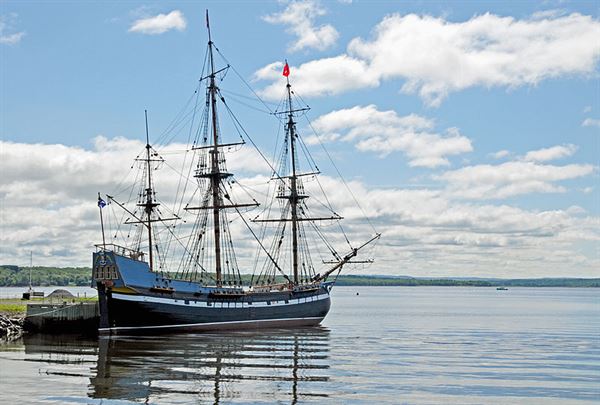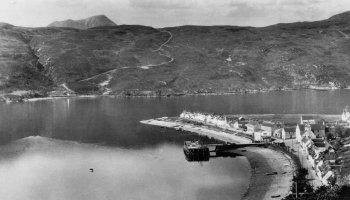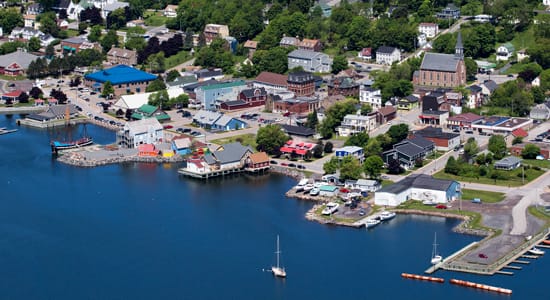 It was only 28 years after the infamous Battle of Culloden, in 1773, when the Hector was moored within Loch Broom taking onboard a group of people from the Highlands. 189 passengers joined the Hector that day, 25 single men, 33 families, a piper and their agent, all of which had one thing in common. They had a fire in their hearts to find a better life and a new land. A land where they were free to speak their own language, Gaelic, to play the music of their ancestors and to wear their beloved tartan without fear of repercussions. This hefty and dangerous journey was to take three months, but would represent the first significant migration of Scottish settlers to Canada.
It was only 28 years after the infamous Battle of Culloden, in 1773, when the Hector was moored within Loch Broom taking onboard a group of people from the Highlands. 189 passengers joined the Hector that day, 25 single men, 33 families, a piper and their agent, all of which had one thing in common. They had a fire in their hearts to find a better life and a new land. A land where they were free to speak their own language, Gaelic, to play the music of their ancestors and to wear their beloved tartan without fear of repercussions. This hefty and dangerous journey was to take three months, but would represent the first significant migration of Scottish settlers to Canada.
The Hector was a fully rigged fluyt built in the Netherlands sometime before 1750. She was employed in the local trade off the coasts of Great Britain but was also involved in the immigrant trade to North America. Whilst she had already made a trip carrying Scottish emigrants to Boston, Massachusetts in 1770, she had never before made a voyage to Canada. By the time of this voyage the Hector was an old ship and had definitely seen better days.

This famous voyage began with her departure from Loch Broom in the second week of July, 1773. Mr. John Pagan, the ships owner, had purchased three shares of land near Pictou, Nova Scotia, along with Dr. John Witherspoon, a Presbyterian minister who is most famous for being one of the Founding Fathers of the United States. John Ross was hired by Pagan and Witherspoon to act as a recruiting agent for settlers willing to emigrate to Nova Scotia and was given authority to offer free passage, one years worth of free provisions and a farm as an incentive. John Ross recruited those that went from Greenock and Lochbroom in Rossshire, with the majority coming from Lochbroom. Most of those that boarded the Hector were poor crofters and artisans who only spoke Gaelic. There was a school teacher onboard, William McKenzie, who was one of only a few passengers who spoke both English and Gaelic.
The arduous journey was a long one and was not without troubles. The journey was delayed by 14 days due to increasingly bad weather. Dysentry and smallpox spread throughout the passengers and claimed the lives of 18 passengers. But spirits were not dampened, and in fact, were raised with the birth of a child not far fro the Canadian coast. A long 11 weeks after it left Scotland the Hector finally reached Pictou harbour. On the 15th September 1773 she made her landing at Browns Point, immediately west of the present day town of Pictou, just as the harsh winter weather was setting in.
Unfortunately the provisions they had been promised never materialised and the settlers had to hurry to build shelter without them before the harsh weather set in and starved them. This was a hard task, but the hardy Scottish settlers managed and proceeded to tame a small part of this wild new continent, naming it Nova Scotia in honour of their roots.

The town of Pictou holds great significance within the history of the Scots spreading throughout Canada. It is known as the ‘Birthplace of New Scotland’. Whilst there was already a great number of Scots settled in other areas of Nova Scotia by the time of the towns founding, it was the first settlement that was primarily made up of Scottish immigrants and was a receiving point for many Scottish immigrants moving to a new home in northern Nova Scotia and Cape Breton Island following the Highland Clearances.
During the early 90s, officials in Nova Scotia sought to commemorate the Hector‘s contribution to Pictou’s, and Nova Scotian, history. The Ship Hector Foundation was formed in 1992 as a result. Consisting of volunteers from Pictou county, the group began to raise funds in order for a replica of the Hector to be built. After several years of fundraising and construction, the replica Hector was launched with great fanfare and media coverage on September 17, 2000 and can still be visited today.

Wish I had known about this when I visited Nova Scotia. It’s very beautiful there and the people we’re all so friendly. Would love to revisit!
I found out about it while doing my geneology! My Mom and I took a cruise that went from NJ up the east coast to Nova Scotia. We rented a car in Halifax and drove to Pictou so I could see the ship. The highways there were SO much better than ours here in the US! It was a breeze to drive up there! I actually went down in the ship! You really must see it! My Fraser relations were on it so it was very exciting for me to see it! And to think they just walked off the ship and were Canadians! No paying a fortune for immigration lawyers or being held in cages and having their kids taken away from them like the present times here in the US!! Oh how I wish my family (from both sides) never left Canada!!
My ancestors, John Oliver(age 60), Agnes Rutherford (age 60,) his wife, and Janet Oliver,their daughter, were forced to emigrate to British North America, (Upper Canada aka Ontario,) in June 1847. John died in July, at sea. In August, Janet died while in Quarentine. Agnes was the only one of the family who survived, and made her way to Galt, On.
Is there a ship/ passenger list as well as the port from which they departed in June 1847?
I would be very appreciative if this information is available. T I A
Is there any information on the MacKenzies that didn’t stay and moved on to the USA ?
My McKenzies came to Pennsylvania from Pictou after the Hector voyage. But, can’t find anything about them.
Looking for my anncestors who saled from Scotland to NovaScotia. There name was Chisholm. Iam not sure what century it was.
Is there a list of passengers who sailed on the Hector from Scotland to Nova Scotia.
Is there a passenger list of who sailed to Nova Scotia as i recently had my DNA. I recently had my DNA results back and have found i have ancestors in NovaScotia the name would have been Chisholm.
From the Ship Hector Descendants Website:
http://shiphectordescendants.ca/PassengerList.aspx